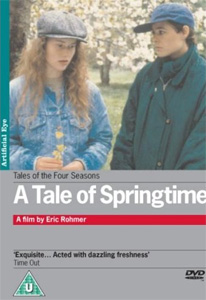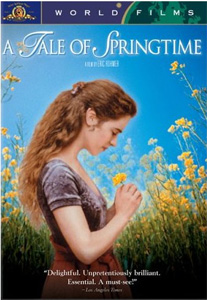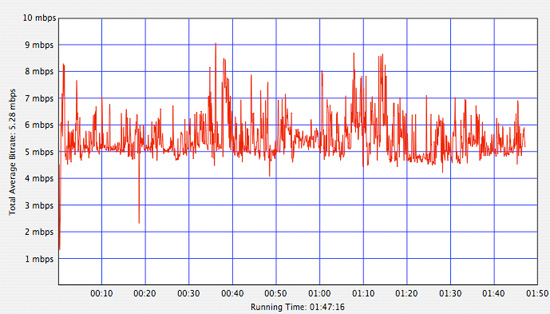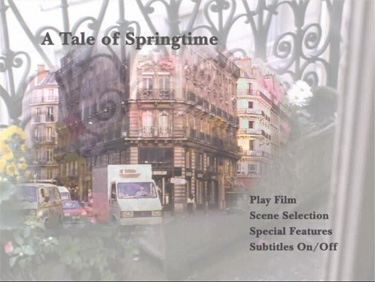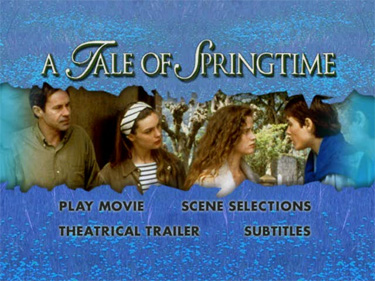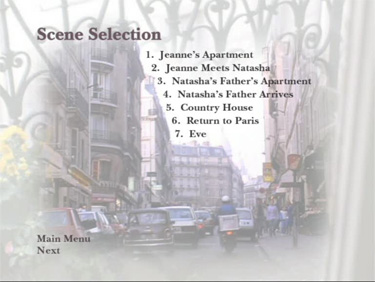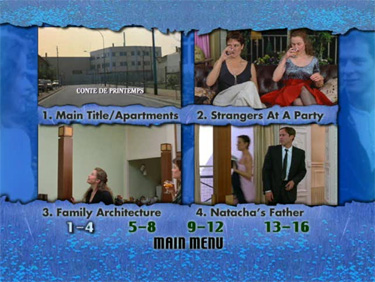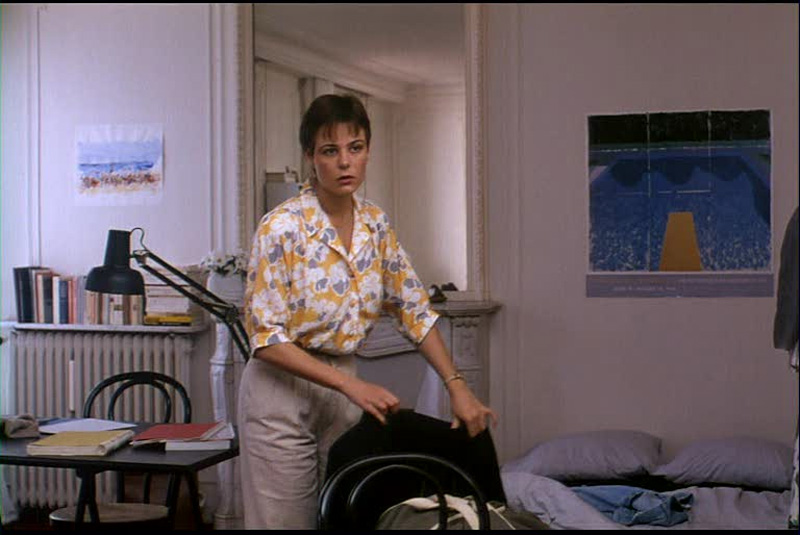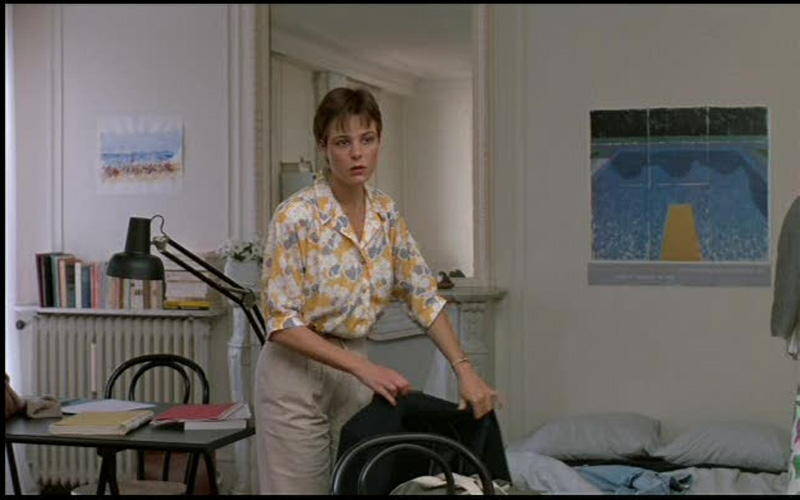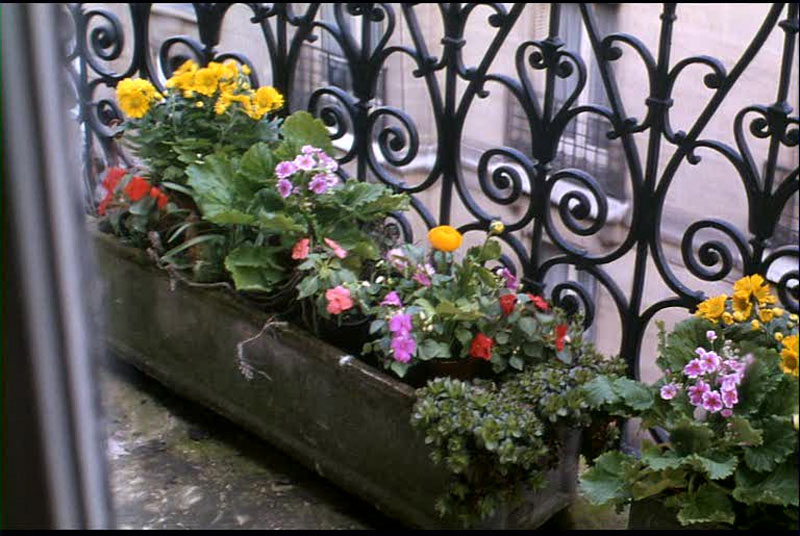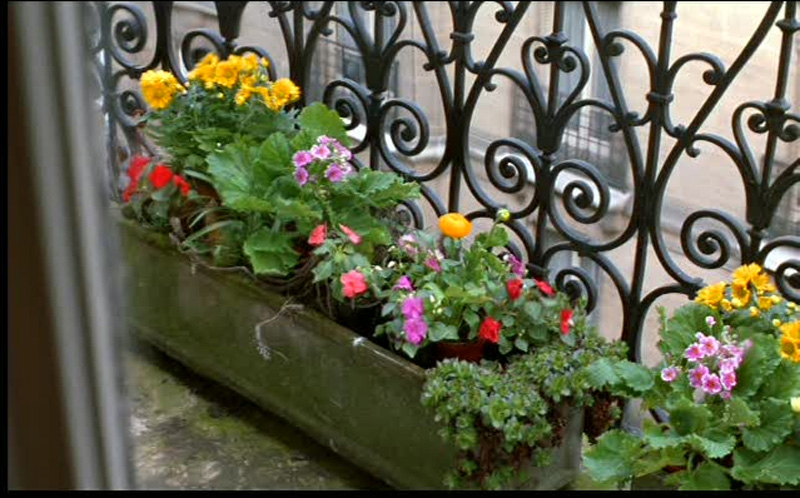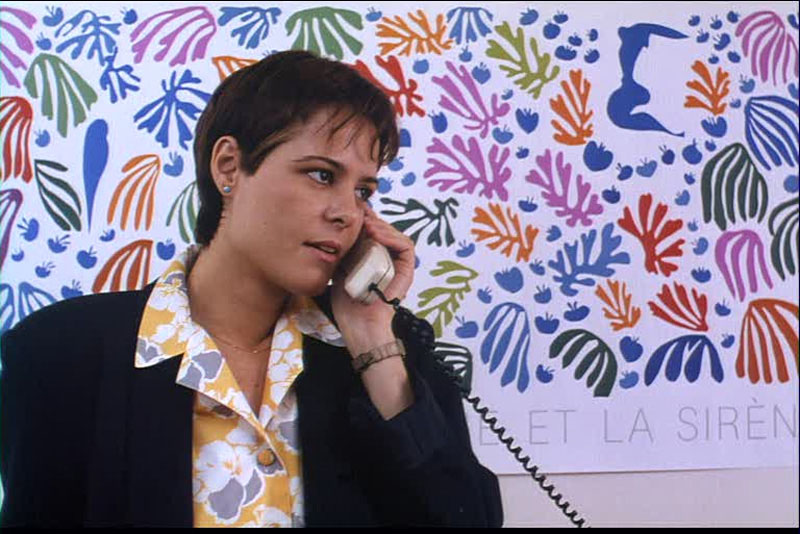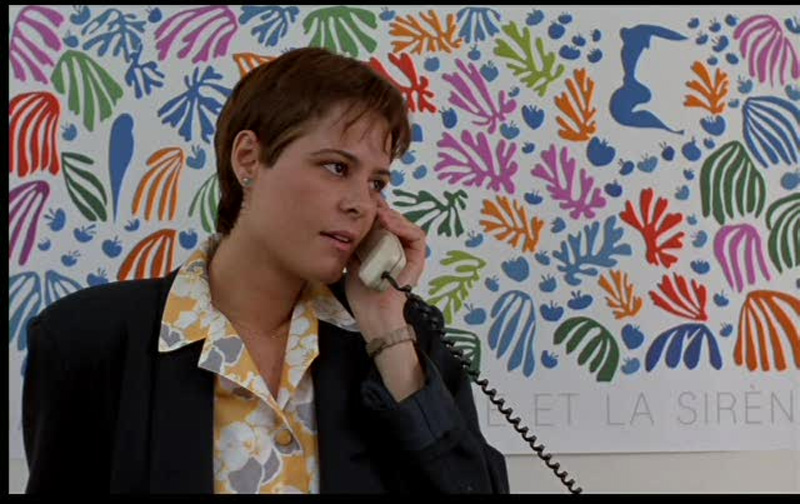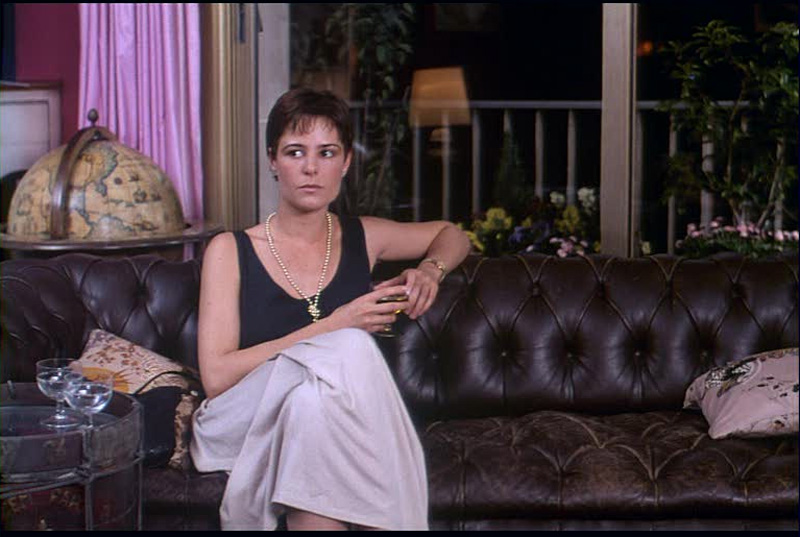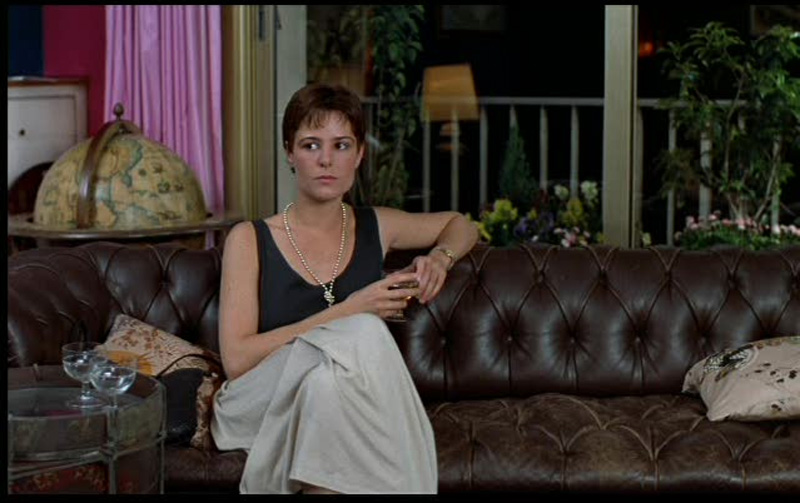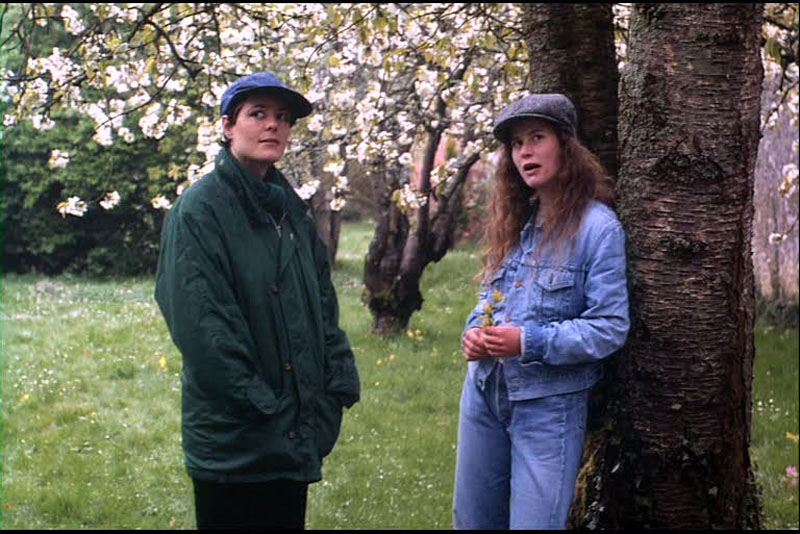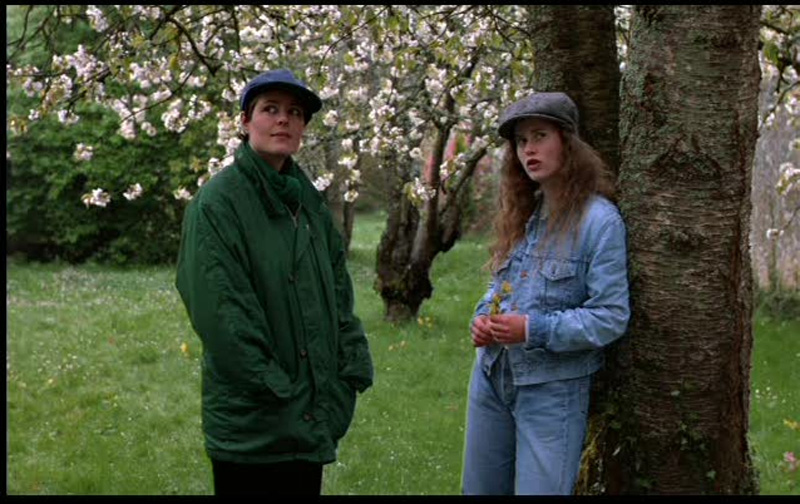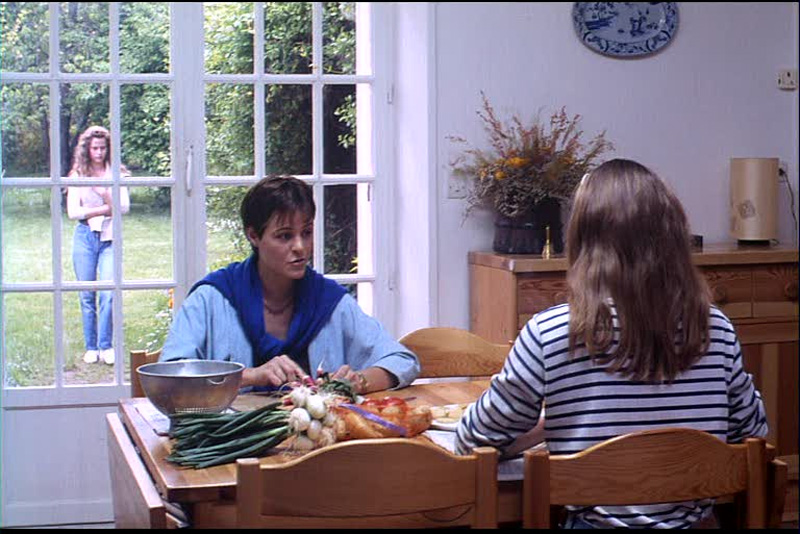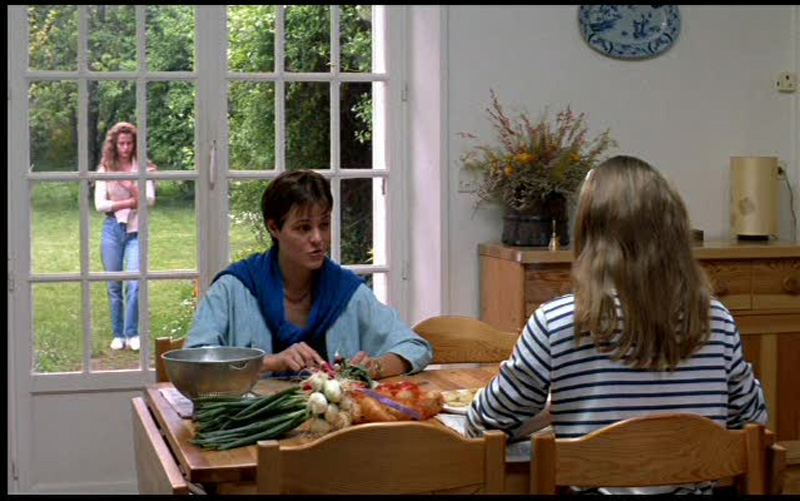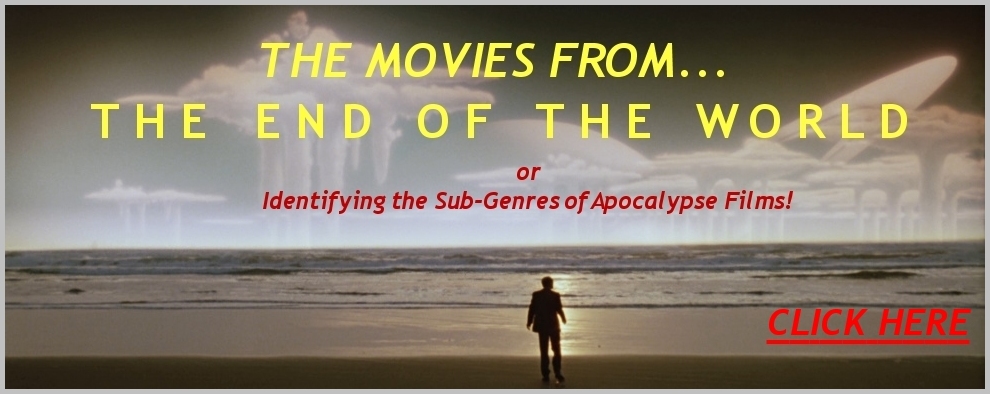|
Firstly, a massive thank you to our Patreon supporters. Your generosity touches me deeply. These supporters have become the single biggest contributing factor to the survival of DVDBeaver. Your assistance has become essential.
What do Patrons receive, that you don't?
1)
Our
weekly
Newsletter
sent to your Inbox every
Monday morning!
Please consider keeping us in existence with a couple of dollars or more each month (your pocket change!) so we can continue to do our best in giving you timely, thorough reviews, calendar updates and detailed comparisons. Thank you very much. |
![]()
![]()

![]()
![]()
|
Search DVDBeaver |
S E A R C H D V D B e a v e r |
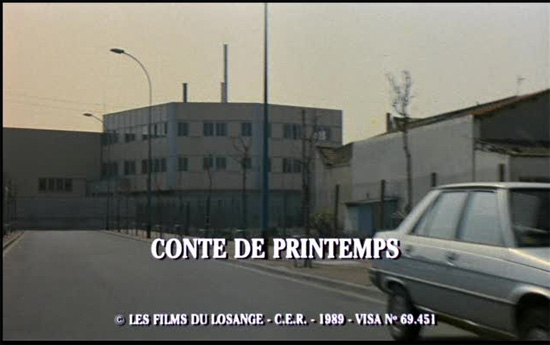
(aka "A Tale of Springtime" or "Contes des quatre saisons: Conte de printemps")
directed by Eric Rohmer
France 1990
|
In
acclaimed director Eric Rohmer's first of the "Tales of the Four
Seasons" series: 1992's "Tale of Springtime", four
characters intertwine in real-life cadence. We are introduced to
them, garner their likes, dislikes, demeanours... and then they
interact. It's that simple... and that wonderful. Typical Rohmer.
Quote
from Eric Rohmer:
|
Posters
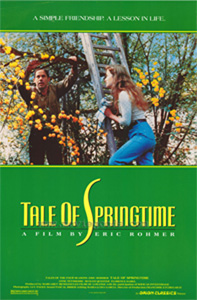 |
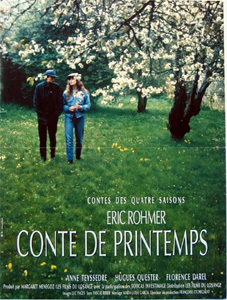 |
Theatrical Release: France 4 April 1990
Reviews More Reviews DVD Reviews
DVD Comparison:
Artificial-Eye - Region 2 - PAL vs. MGM - Region 1 - NTSC
Big thanks to Per-Olof Strandberg and Per-olof Strandberg for the Screen Caps!
(Artificial-Eye - Region 2 - PAL - LEFT vs. MGM - Region 1 - NTSC - RIGHT)
| DVD Box Covers |
|
|
| Distribution |
Artificial-Eye Region 2 - PAL |
MGM Region 1 - NTSC |
| Runtime | 1:42:42 (4% PAL speedup) | 1:47:12 |
| Video |
1:1.66 Original Aspect Ratio |
1:1.66 Original Aspect Ratio |
|
NOTE: The Vertical axis represents the bits transferred per second. The Horizontal is the time in minutes. |
||
|
Bitrate:
Artificial-Eye
|
|
|
|
Bitrate:
MGM
|
|
|
| Audio | French (Dolby Digital 2.0) |
French (Dolby Digital 2.0) |
| Subtitles | English, None | English, Spanish, French, None |
| Features |
Release Information: Studio: Artificial-Eye Aspect Ratio:
Edition Details: Chapters 14 |
Release Information: Studio: MGM Aspect Ratio:
Edition Details:
DVD Release Date: 05/03
2002 Chapters 16 |
| Comments: |
A Tale of Springtime (1990) is the first
part of Tales of Four Seasons. The others: A
Winter's Tale (1992) A Summer's Tale (1996) and An Autumn Tale
(1998) are available
from Artificial-Eye as separate DVD's or in a box set
HERE.
The MGM (R1): |
DVD Menus
(Artificial-Eye - Region 2 - PAL -
LEFT vs. MGM - Region 1 - NTSC - RIGHT)
|
|
|
|
|
|
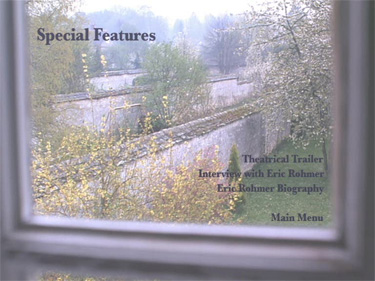 |
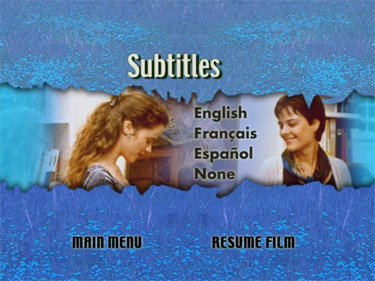 |
Screen Captures
(Artificial-Eye - Region 2 - PAL - TOP vs. MGM - Region 1 - NTSC - BOTTOM)
|
|
|
|
(Artificial-Eye - Region 2 - PAL - TOP vs. MGM - Region 1 - NTSC - BOTTOM)
|
|
|
|
(Artificial-Eye - Region 2 - PAL - TOP vs. MGM - Region 1 - NTSC - BOTTOM)
|
|
|
|
(Artificial-Eye - Region 2 - PAL - TOP vs. MGM - Region 1 - NTSC - BOTTOM)
|
|
|
|
(Artificial-Eye - Region 2 - PAL - TOP vs. MGM - Region 1 - NTSC - BOTTOM)
|
|
|
|
(Artificial-Eye - Region 2 - PAL - TOP vs. MGM - Region 1 - NTSC - BOTTOM)
|
|
|
|
Report Card:
![]()
![]()
![]()
![]()


